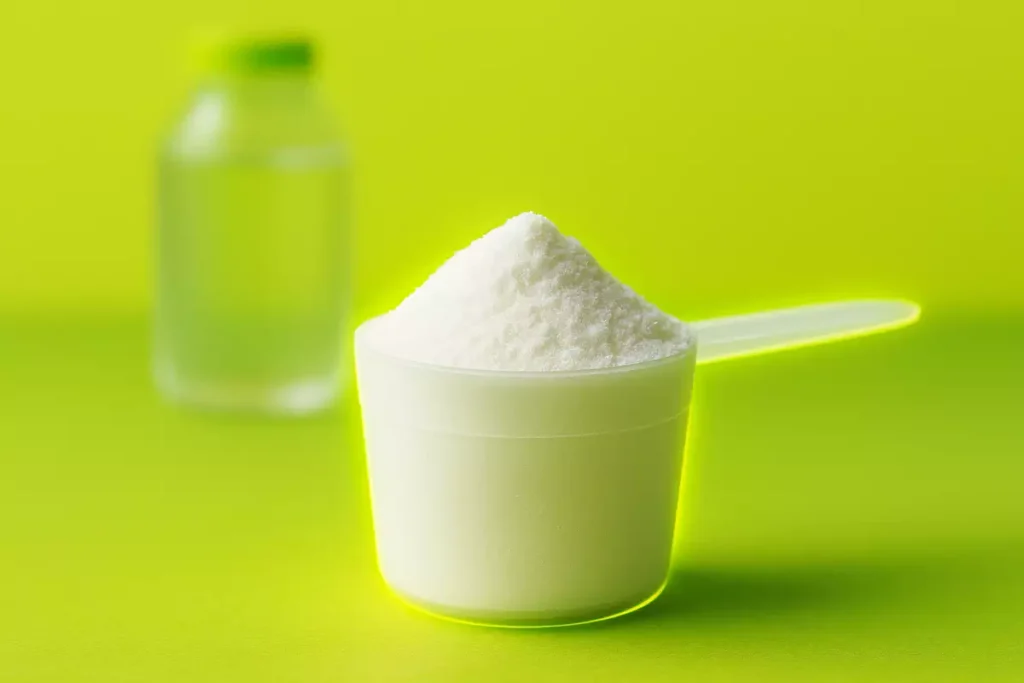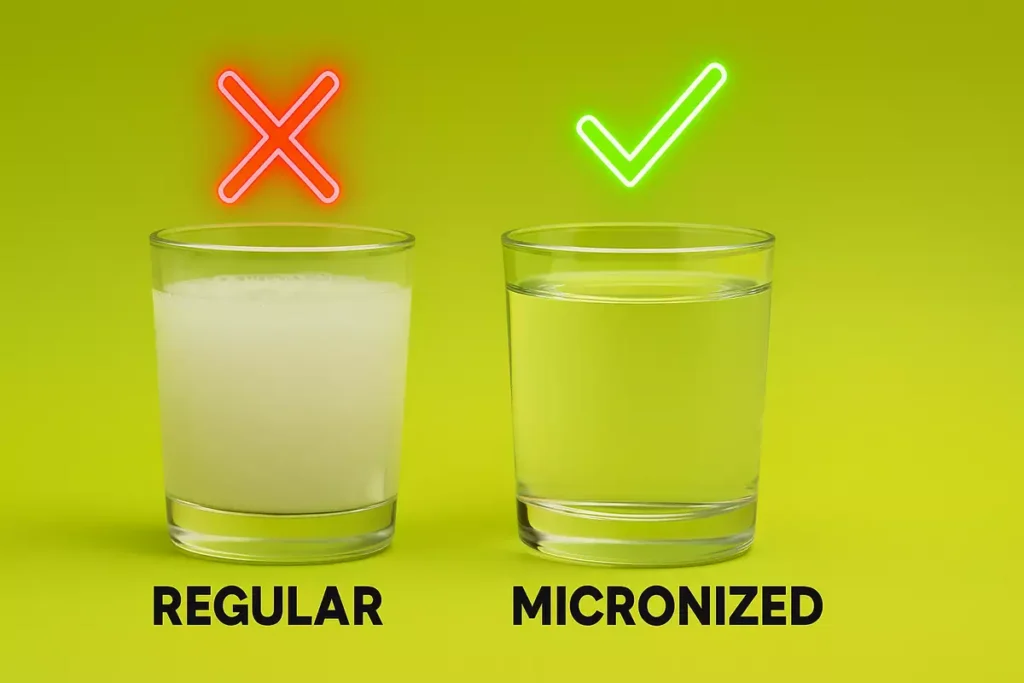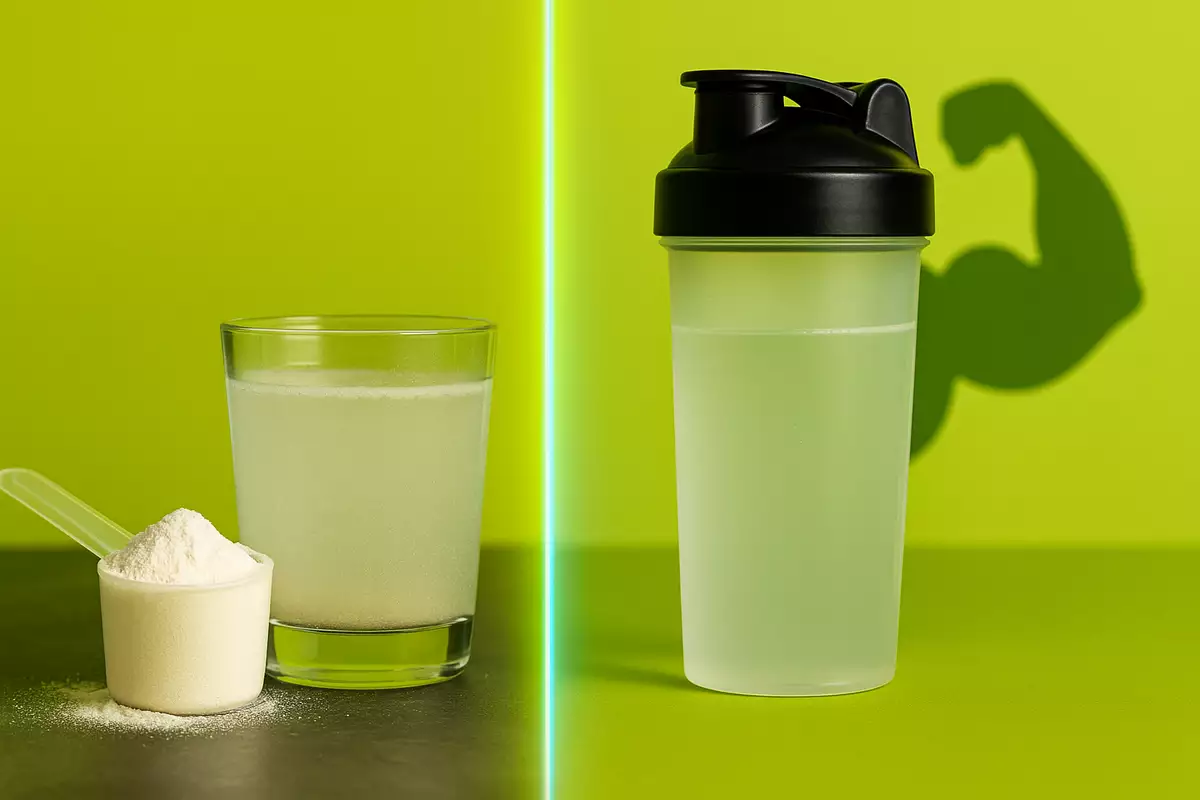Choosing between micronized vs regular creatine monohydrate can feel confusing—especially when both promise similar muscle-building results.
But here’s the truth: while both forms deliver proven strength and performance benefits, one may help you stay more consistent with fewer side effects.
In this article, I’ll break down the real-world differences, share my personal experience, and help you decide which form fits your fitness goals best.
Whether you’re bulking, cutting, or just starting creatine, this guide gives you everything you need—without the fluff.
Table of contents
Quick Answer – Which Creatine Should You Choose?
If you’re stuck between regular creatine monohydrate and the micronized version, go with micronized creatine—especially if you care about easier digestion, smoother mixing, and long-term consistency.
Both forms deliver the same results in terms of muscle growth, strength, and performance. But micronized creatine has one big edge: it’s more user-friendly. That makes it easier to stick with, especially if you’ve ever felt bloated or uneasy from regular creatine.
If you’re just getting started with creatine and want to understand the expected results timeline, check out this complete breakdown.
What Is Regular Creatine Monohydrate?

Regular creatine monohydrate is the classic, time-tested version that’s been used by bodybuilders and athletes for decades.
It’s cheap, widely available, and still the gold standard in terms of scientific research. I’ve personally used it for years during my earlier training days.
But let’s be real—it doesn’t always mix well in water. I remember back in 2018, I used a budget brand that left a gritty texture in my shaker. Even worse, it gave me bloating after workouts. That’s when I started looking into other options.
If you want to maximize its benefits while avoiding potential drawbacks, make sure you’re dosing it properly. I recommend reading this guide on creatine monohydrate dosage for an 80kg male.
What Is Micronized Creatine Monohydrate?
Micronized creatine is the same creatine monohydrate, just processed into smaller particles. The goal? Better mixability, faster absorption, and fewer digestive issues.
This stuff is a game changer if you’ve ever dreaded your post-workout shake because of the chalky feel. For me, it was night and day—micronized creatine from Optimum Nutrition mixes smoothly in water or protein shakes and doesn’t upset my stomach.
I had a client named Lukas in Germany who also had issues with bloating. We switched him to a Creapure-based micronized version, and within days, he messaged me:
“Zero discomfort. I can finally use creatine again!”
For those interested in stacking, micronized creatine also works great in combinations—like the casein + creatine stack for recovery and lean muscle support.
Head-to-Head Comparison: Micronized vs Regular

Feature | Micronized Creatine | Regular Creatine |
|---|---|---|
Absorption | Slightly faster | Standard |
Mixability | Excellent, no clumps | Can be gritty |
Digestive comfort | Easier on stomach | May cause bloating in some |
Price | Slightly higher | Usually cheaper |
Effectiveness | Same as regular | Same as micronized |
From my own experience and coaching clients, both forms work.
But the comfort and ease of micronized make it easier to stay consistent. And consistency is what gets results.
If you’re in a cutting phase, you might be wondering if creatine still makes sense. Spoiler: it does. Here’s my take on using creatine while cutting.
When to Choose Micronized Over Regular
If you’ve ever experienced:
- Bloating
- Upset stomach
- Gritty aftertaste
- Trouble mixing it into water or shakes
…then you’ll love micronized creatine.
I had a Canadian client, Jacob, who trained hard but always skipped creatine because he “hated the texture.”
Once we switched him to a micronized version, he stuck with it—and hit a personal deadlift PR within 2 months.
For anyone worried about creatine and hair loss, make sure to separate the facts from fiction. Here’s a full breakdown of the creatine and hair loss myth.
Final Verdict – Which One Works Best for You?

If budget is your biggest concern and you digest regular creatine just fine, go for it. It still works incredibly well.
But if you’re someone who values comfort, convenience, and a better daily experience, I highly recommend micronized creatine.
It’s what I personally use, and it’s what I suggest to most of my clients—especially beginners.
For me, consistency beats everything. Micronized creatine helped me stay on track during a lean bulk in 2024, when I was training intensely and dialing in recovery.
And that’s exactly what I want for you—results without unnecessary hassle.
Also, be mindful of how creatine interacts with other supplements like caffeine. Learn more in this creatine and caffeine interaction guide.
Bonus: My Personal Results with Both Forms
I take 5g of micronized creatine post-workout, mixed with my whey shake and cold water.
On rest days, I take it with breakfast. I’ve also tried loading phases (20g/day for 5 days), but honestly, I don’t recommend it.
Just start with 5g a day—you’ll still saturate your muscles over time without the discomfort.
A personal favorite trick: mixing it with pineapple juice post-workout. It helps with absorption thanks to the natural sugars, and it tastes amazing.
My client Ana from Brazil also saw faster recovery between workouts after switching to micronized creatine. She was training 5 days a week, and her energy and strength noticeably improved.
Also, creatine isn’t just for muscles. It’s been shown to support mental clarity and cognitive health too. For a deeper dive, check out the brain health benefits of creatine.
Final tip: Whichever form you choose, just make sure you use it daily.
Creatine is one of the most researched, safest, and effective supplements you can take—especially when you’re consistent.



Leave a Reply